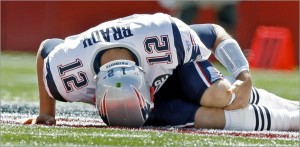Football is a harsh sport, and even with all protective gear like the helmets, pads, braces, and supports, injuries are a prevalent part of the game. Taking into account the the size of the players, speed, and physical nature of the game makes football knee injuries quite typical.
Injuries occurring during football games and practice are due to a combination of high speeds and full contact. The force applied to either bringing an opponent down or resisting being brought to the ground makes football players prone to injury anywhere on their bodies, regardless of protective equipment.
Knee injuries are some of the most common injuries in football, especially those to the anterior or posterior cruciate ligament (ACL/PCL) and to the menisci (cartilage of the knee). These knee injuries can negatively affect a player’s long term involvement in the sport. While overuse injuries can occur, traumatic injuries such as concussions are quite frequent.
Football players also have a higher chance of ankle sprains and strains, which are another common type of football injuries. Treatment of sprains and strains usually is best accomplished by the “R.I.C.E.” method (Rest, Ice, Compression, Elevate).
Football players are very susceptible to concussions. A concussion is a change in mental state due to a traumatic impact. Not all those who suffer a concussion will lose consciousness. Some signs that a concussion has been sustained are headache, dizziness, nausea, loss of balance, drowsiness, numbness/tingling, difficulty concentrating, and blurry vision.
Some of these injuries may be minor but it is still important to get seen by health care professional.



